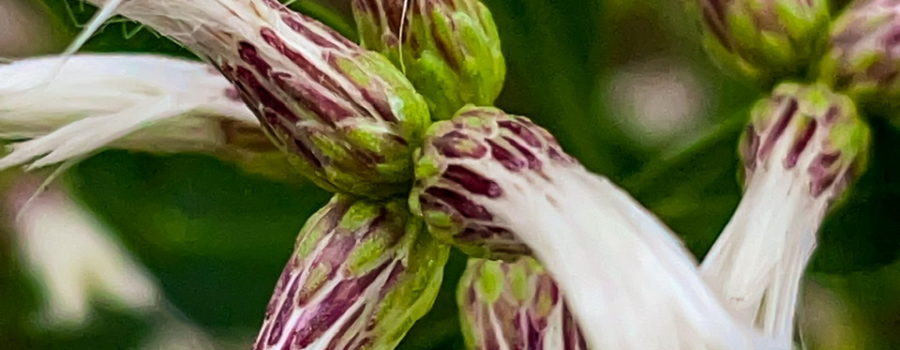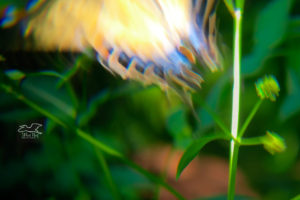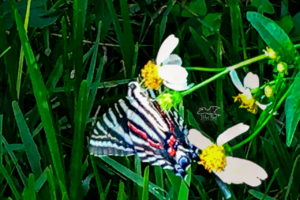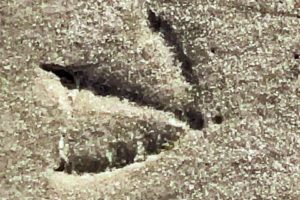Groundseltree Has Some Unique and Interesting Characteristics

A few weeks ago when I went out to the boardwalk in the Gothe State Forest, I saw quite a few plants that don’t grow in my neighborhood, the sandhills. The boardwalk itself takes you out into a swampy area, but most of the surrounding land is pine flatwoods. The flatwoods are considerably more wet than the sandhills, so it’s not surprising that much of the plant life would be different. Of course, there will always be some overlapping species like the longleaf pines. Another one that you can find in both habitats is the groundseltree (Baccharis halimifolia), also known as groundsel bush, consumption weed, saltbush, or silvering. Many people consider it a weed, and it definitely has some weedy features, but it also has some interesting features that can recommend it as an ornamental plant.

Groundseltree is a member of the aster family that also includes sunflowers, daisies, and Elliott’s aster. Unlike most of the members of that large family, groundseltree doesn’t have the typical round flowers with the wide face. Groundseltree is also the only member of the family that develops woody stems and branches and if trained correctly, a thick, woody trunk. It’s also the only aster that can grow to the small tree height of 10-12 feet. Even though the flowers of the groundseltree don’t look like most other asters, they are still very attractive. They are usually a white to off white, sometimes with a light greenish tint. Rather than being a spring or summer bloomer, groundseltree blooms in the late fall and early winter, after most other flowers have long passed. Again, unlike most asters, groundseltree is a dioecious plant, meaning that individual plants and therefore their flowers are either male or female. Female plants are the ones that have the most impressive and showy flowers, while the male plants have smaller, much less attractive flowers, but both plants are required in order to get fertile seeds.

Another unusual aspect of the groundseltree plant is that it is not very particular about where it will grow. It will grow in almost any soil type from rich loam to clay, to nutrient poor sand. The soil can also be either acidic, neutral, or alkaline and can be waterlogged or dry. An established plant can easily withstand either flooding or droughts. The groundseltree will even grow in areas with brackish or salt water and it doesn’t seem to mind salt spray, either. It’s often found in areas with disturbed soil like roadsides, construction sites, power line right of ways, and pastures. Because it is so salt tolerant, it is often a coastal plant, but can be easily spread further inland, too. These plants are even resistant to most insects and diseases. With all that going for groundseltree, it’s easy to see why some people use it as an ornamental, especially for hedgerows.

Of course, no plant is absolutely perfect, and groundseltree is no exception. It spreads by producing large numbers of seeds that have pappi, fuzzy, pyramidal heads that allow them to float on the wind, sometimes for significant distances. This type of seed distribution, coupled with the large number of seeds that are produced, the ability to grow almost anywhere, and the fact that groundseltree seeds don’t need a dormant stage like most seeds, means that this plant can be hard to control. It can easily spread to unwanted areas and into new habitats. The other disadvantage to groundseltree as an ornamental is that the seeds and leaves are highly toxic to people, pets, and livestock. They contain cardiac glycosides that can cause diarrhea, tremors, respiratory distress, seizures, and eventually death. Fortunately, most livestock and wild grazing animals won’t eat it because of it’s very bitter taste, but pets and children can be easily poisoned by just one or two of these leaves or seeds.

All in all, I don’t think that I would purposely plant groundseltree in my yard due to concerns about my dogs and goats, but I do admire it’s incredible hardiness and I love the gorgeous late fall flowers. It is a plant that we have growing in the state forest land behind my property, so there is always a possibility that one day a seed or two will land here and begin to grow. If that happens I would probably leave it alone as long as it didn’t get out of control. After all, some pretty fall and winter flowers wouldn’t be a bad thing. Does groundseltree grow where you live?

Do you want to see beautiful nature photography and artwork every day? Do you like to learn more about nature in an interesting and entertaining way? If so, you should subscribe to this blog. We’ll deliver it right to your inbox for you!





Recent Comments